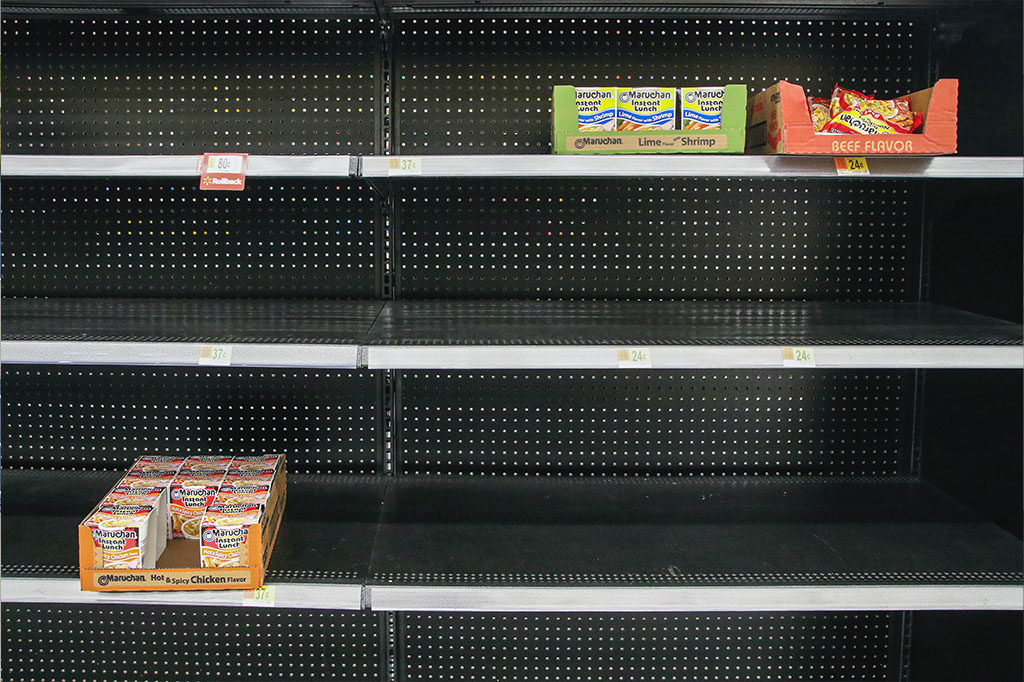As the world continues to recover from the effects of the COVID-19 pandemic, supply chain issues are causing widespread product shortages in a variety of different industries.
Logistics company ZhenHub has published a report that examines notable product shortages in 2022, major factors behind product shortages, and the impact of product shortages on customers and businesses.
4 Notable Product Shortages in 2022
The report noted that during the start of the pandemic, toilet paper, hand sanitizer and disinfectants were hard to find. Two years later, in 2022, other products are experiencing shortages:
1. Groceries and Food
The report noted that empty shelves are becoming common in groceries across North America and Europe. Meat (especially beef and poultry), eggs, baby formula, canned goods, paper goods, and children’s medicine are some goods that have been hard to find at certain points this year.
Unlike previous years, however, product shortages vary from different locations. One store may have some items in stock, while others may not. This pattern is different to the shortages we saw during the pandemic, where shortages were due to people stockpiling goods out of panic.
2. Aluminum
According to the report, one of the main reasons canned goods are harder to find in stores is the tight supply of aluminum, which is a major component in the manufacture of cans. China’s efforts to reduce its carbon emission slowed down the production of aluminum and other energy-intensive metals, as did rising gas costs in Europe.
Certain companies, such as breweries, increased their demand for aluminum cans partly due to their cheaper cost to transport as compared to glass bottles.
3. Semiconductors
The demand for advanced computer microchips is higher than ever, according to the report, meaning the semiconductor supply will remain tight. From high-tech cars to 5G-ready smartphones, semiconductors are vital to modern electronics. Semiconductors have a notoriously complicated production process that is difficult to speed up, leading to a huge backlog in many major producers.
4. Tampons
Stories of stocked-out feminine hygiene products in stores have gone viral on social media. The report attributes this to COVID-related staffing challenges that contributed to supply issues, but said that it believes inventory is likely to improve quickly.
3 Major Factors Behind Product Shortages
According to the report, product shortages can be attributed to three factors:
1. Lack of Workers
There aren’t enough people making, moving, and selling the goods. This shortage in skilled labor is being blamed on changing working conditions and low pay. The U.S. Labor Department reported a 5.5 million difference in job openings as there are workers.
2. Russian-Ukraine Conflict
The Russia and Ukraine conflict has disrupted trade and logistics and increased shipping costs worldwide, having a profound effect on global markets. One of the biggest impacts, notes the report, is to exports of grain. Both Russia and Ukraine are grain exporting powerhouses accounting for 24% of global wheat exports by trade value, 57% of sunflower seed oil exports, and 14% of corn from 2016 to 2020, according to data from UN Comtrade. They also supply 30% of the world’s wheat.
Europe is also heavily dependent on Russia for natural gas and crude oil. Russia is a major exporter of essential commodities such as precious stones and metals, leaving many businesses and manufacturers without Tier 1 and 2 suppliers. It has led to a rapidly dwindling supply of raw materials for production.
3. Natural Disasters and Climate Change
Floods, heavy snowfall, typhoons, and fires have all caused major disruptions in areas that house many manufacturing factories or transportation hubs, according to the report. While these events mostly cause short-term delays, these problems can become a long-running issue.
It cited the example of the Texas power crisis, which was caused by heavy winter storms, and which shut down three major semiconductor factories while also closing major railroads, which are important routes for efficient supply chains.
The Impact of Product Shortages
The most pressing concern for consumers, according to ZhenHub, is the fear of inflation, with customers paying on average 8.5% more for goods this 2022 than last year.
Delivery speeds are also noticeably slower compared to the same period in previous years.
ZhenHub notes that business and political leaders want to create more sustainable systems for workers by promoting safer workspaces, comprehensive education and technical skills training, and resilient infrastructure. Some regions even offer generous incentives to companies to encourage them to move and establish production factories to stimulate local economies and provide high-paying jobs.
For consumers, the report recommends that responsible shopping is key to managing product shortages. Retailers are managing inventories, and hoarding is a wasteful practice that may also do more harm than good.
To stay informed on import and shipping challenges and other important updates, stay connected with a customs broker.




